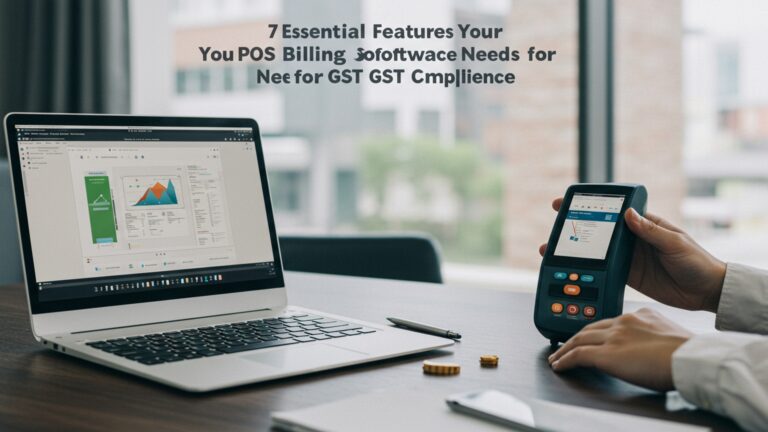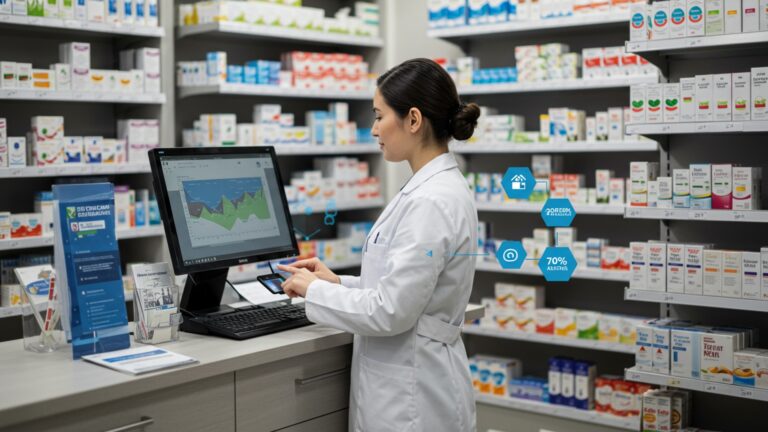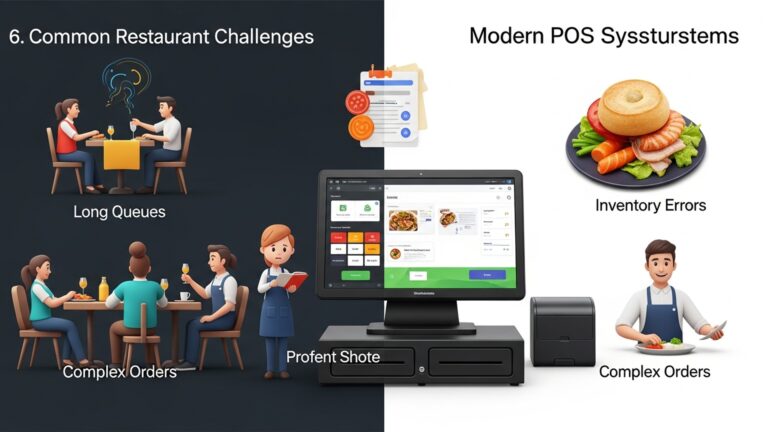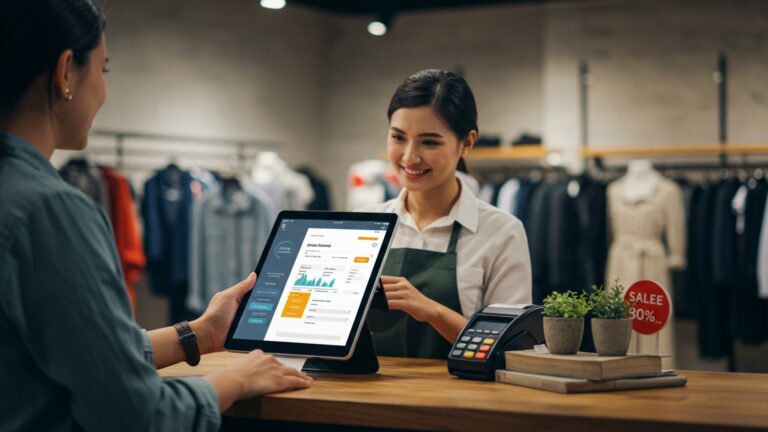10 Smart Strategies to Maximize Profit with Your Restaurant POS System
In an era where every margin point counts, modern restaurant POS software transcends basic transaction processing, evolving into an indispensable profit-driving engine. It leverages real-time analytics to pinpoint critical opportunities, from AI-driven inventory forecasting that dramatically reduces food waste to personalized upsell prompts, like suggesting a premium wine pairing based on a diner’s order history, directly boosting average check values. Moreover, these advanced systems enable dynamic labor scheduling informed by predictive demand, optimizing staffing levels and minimizing operational overhead. This shift transforms your POS from a simple terminal into a strategic hub, actively shaping fiscal health and operational agility in today’s fiercely competitive restaurant landscape.
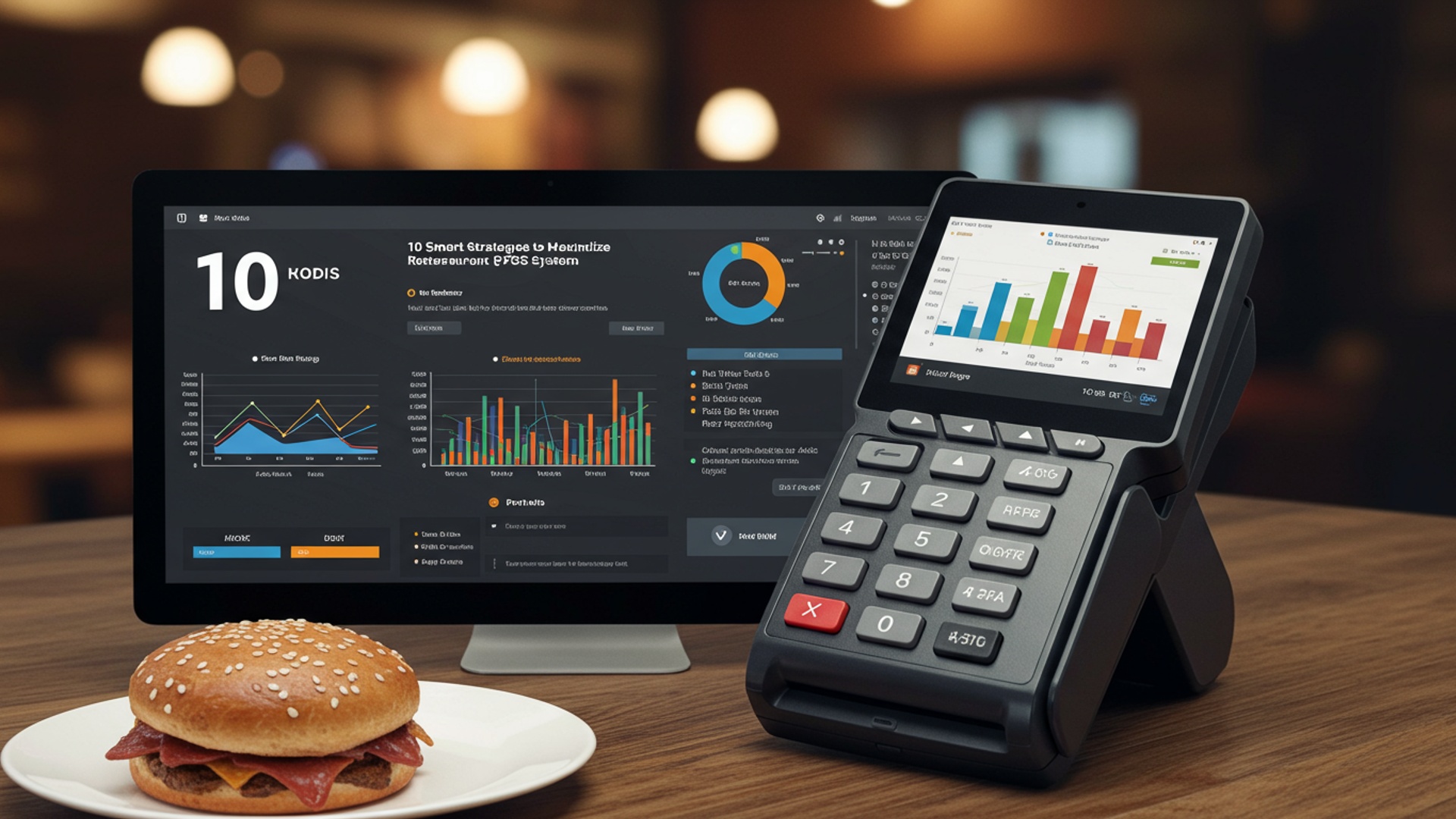
1. Unlocking the Full Potential: Beyond Basic Transactions with Your Restaurant POS System
Many restaurant owners view their Point of Sale (POS) system primarily as a tool for processing payments and ringing up orders. While these are fundamental functions, a modern Restaurant POS software is a sophisticated, integrated platform designed to be the central nervous system of your entire operation. It’s an ecosystem that connects front-of-house, back-of-house. management, providing a panoramic view of your business health.
At its core, a POS system digitizes the sales process. Instead of manual order taking and cash registers, it provides touch-screen interfaces for staff to input orders, apply discounts, manage tables. process various payment types (credit cards, mobile payments, gift cards). But, today’s advanced systems go far beyond this. They integrate with inventory management, employee scheduling, customer relationship management (CRM). robust reporting tools. Understanding this breadth of functionality is the first step to truly maximizing your profits.
For instance, imagine a bustling Friday night. Your server takes an order on a handheld device, which instantly communicates with the kitchen display system (KDS). The KDS organizes orders, tracks cooking times. ensures dishes are prepared efficiently. Simultaneously, the POS system deducts ingredients from inventory, records the sale. adds the customer to your loyalty program. This seamless flow, facilitated by comprehensive Restaurant POS software, drastically reduces errors and speeds up service, directly impacting your bottom line.
2. Data-Driven Menu Engineering for Optimal Profitability
Your menu is more than just a list of dishes; it’s a strategic tool. Modern Restaurant POS software provides invaluable data analytics that can transform how you design and price your offerings. By tracking sales volumes, popularity. profit margins for every single item, you can employ sophisticated menu engineering techniques to boost profitability.
- Identifying “Stars”
- Spotting “Plow Horses”
- Uncovering “Puzzles”
- Eliminating “Dogs”
These are high-profit, high-popularity items. Your POS data will clearly show which dishes fall into this category. The strategy here is to keep them prominent on your menu and potentially cross-promote them.
High-popularity, low-profit items. Customers love them. they don’t contribute significantly to your bottom line. Your POS can help you identify these. You might consider slightly increasing their price, reducing portion sizes, or finding more cost-effective ingredients without compromising quality.
Low-popularity, high-profit items. These dishes have great profit margins but aren’t selling well. With insights from your Restaurant POS software, you can investigate why. Is it the description? Placement on the menu? Lack of promotion? You might re-engineer them, provide staff training to upsell them, or rename them to be more appealing.
Low-popularity, low-profit items. These are drags on your menu. Your POS will highlight these underperformers. The best strategy is often to remove them entirely to simplify operations and focus on more profitable dishes.
A fast-casual restaurant, “Green Bites,” used their POS data to examine their salad bar toppings. They discovered that while avocado was popular, its high cost and spoilage rate made it a “Plow Horse.” By implementing a small upcharge for avocado (which their POS system easily handled), they turned it into a “Star” item, increasing their average check size and overall profitability without losing customer appeal.
3. Streamlined Inventory Management to Minimize Waste and Boost Efficiency
Food waste and inefficient inventory practices can be significant profit drains for any restaurant. An integrated inventory management module within your Restaurant POS software is a game-changer, providing real-time tracking of ingredients from delivery to consumption.
Here’s how it works:
- Automated Deduction
- Recipe Management
- Vendor Management & Ordering
- Waste Tracking
Every time an item is sold through the POS, the system automatically deducts the corresponding ingredients from your inventory. For example, if a burger is sold, the system subtracts one patty, a bun, lettuce, tomato, etc.
Input precise recipes into your POS, detailing the exact quantities of each ingredient per dish. This ensures accurate tracking and helps maintain consistency.
The system can track vendor insights, order history. even suggest reorder points based on current stock levels and sales forecasts. This prevents both over-ordering (leading to spoilage) and under-ordering (leading to stockouts and lost sales).
Staff can log waste directly into the POS, providing valuable data on spoilage, spills. portion control issues. This data helps identify problem areas and implement corrective measures.
“The Crust Pizzeria” struggled with inconsistent pizza dough costs due to varying flour usage. By implementing a detailed recipe in their Restaurant POS software and linking it to inventory, they were able to track flour consumption accurately. Within three months, they reduced flour waste by 15% and achieved a 5% improvement in their overall food cost percentage, directly translating to higher profits.
4. Elevating Customer Experience and Driving Loyalty Programs
Repeat customers are the backbone of a profitable restaurant. Your Restaurant POS software isn’t just for transactions; it’s a powerful tool for building strong customer relationships and fostering loyalty.
Key features include:
- Customer Databases
- Personalized Marketing
- Integrated Loyalty Programs
- Feedback Collection
Collect and store valuable customer insights, including contact details, order history, dietary preferences. even special occasions like birthdays.
Use this data to send targeted promotions. For example, if a customer frequently orders vegetarian dishes, you can send them an email about a new plant-based special.
Your POS can seamlessly manage points-based systems, tiered rewards, or punch-card programs. Customers earn points with each purchase, which they can redeem for discounts or free items. This encourages repeat visits.
Some POS systems offer integrated tools for collecting customer feedback, allowing you to quickly address concerns and improve service.
Implement a simple loyalty program where customers earn 1 point for every dollar spent. 100 points can be redeemed for a $5 discount. Promote this actively. “Café Delight” saw a 20% increase in repeat customer visits within six months of launching such a program, directly attributable to their easily managed Restaurant POS software.
5. Optimizing Labor Costs and Boosting Operational Efficiency with Staff Management
Labor costs are often the largest expense for a restaurant after food costs. Your Restaurant POS software can significantly streamline staff management, reducing unnecessary expenditures and improving overall operational efficiency.
- Time Clock Integration
- Shift Scheduling
- Performance Tracking
- Payroll Integration
Employees clock in and out directly through the POS terminal, ensuring accurate timekeeping and eliminating manual errors. This data feeds directly into payroll.
Many modern POS systems include or integrate with scheduling tools. Managers can create schedules, communicate with staff. track actual vs. scheduled hours, helping to prevent overstaffing during slow periods.
The POS can track individual server performance, including average check size, upsell rates. customer feedback (if applicable). This data can inform training needs and reward high performers.
Seamless integration with payroll services reduces administrative overhead and ensures accurate, timely payments to staff.
Consider the impact of reducing just a few hours of unnecessary labor per week across your team. Over a year, this can amount to significant savings. A study by Toast (a leading POS provider) found that restaurants using integrated labor management tools can reduce labor costs by up to 5% by optimizing schedules and minimizing overtime.
6. Implementing Dynamic Pricing and Targeted Promotions to Maximize Revenue
Static pricing can leave money on the table. Your Restaurant POS software provides the data needed to implement dynamic pricing strategies and targeted promotions that attract customers during slow periods and maximize revenue during peak times.
- Happy Hour Specials
- Combo Deals & Bundles
- Loyalty Member Exclusives
- Seasonal Promotions
Automatically apply discounts to specific items during designated off-peak hours (e. g. , 3-6 PM). Your POS handles the timing and pricing adjustments effortlessly.
Create profitable combo meals (e. g. , “Burger, Fries & Drink for $12”) that encourage higher average checks. The POS ensures the correct pricing is applied.
Offer special discounts or early access to new menu items for your loyalty program members, driving engagement and repeat business.
Easily set up and manage promotions for holidays or special events.
“The Daily Grind” coffee shop used their Restaurant POS software to identify a significant dip in sales between 2 PM and 4 PM. They implemented an automated “Afternoon Boost” promotion through their POS, offering 25% off all pastries with any coffee purchase during those hours. Within a month, they saw a 15% increase in sales during that previously slow period, converting idle time into profitable transactions.
7. Seamless Online Ordering and Delivery Integrations for Expanded Reach
In today’s digital age, online ordering and delivery are non-negotiable for many restaurants. Your Restaurant POS software acts as the crucial hub, connecting your in-house operations with the vast world of digital orders.
There are generally two approaches:
| Feature | In-House Online Ordering (Integrated with POS) | Third-Party Delivery Platforms (Integrated with POS) |
|---|---|---|
| Control over Customer Data | High – You own the customer relationship and data for future marketing. | Low – Platforms typically own the customer data. |
| Fees/Commissions | Typically lower fixed fees or a small percentage per order. | Higher commissions (often 15-30% per order). |
| Delivery Logistics | Requires your own delivery drivers or integration with a separate delivery service. | Platforms handle delivery logistics, reducing operational burden. |
| Market Reach | Relies on your own marketing efforts to drive traffic to your site. | Leverages the platform’s large user base and marketing. |
| Integration with POS | Orders flow directly into your POS and KDS, streamlining operations. | Modern POS systems integrate to avoid manual re-entry of orders from delivery tablets. |
The key is that your Restaurant POS software should seamlessly integrate with both. This means online orders appear directly on your KDS, sales are automatically recorded. inventory is updated, eliminating the need for manual data entry and reducing errors. This not only expands your customer base but also optimizes workflow, allowing staff to focus on in-house diners.
8. Minimizing Errors and Preventing Theft with Robust Security Features
Shrinkage, whether from honest mistakes or intentional theft, can severely impact your restaurant’s profitability. A robust Restaurant POS software comes equipped with security features designed to minimize both.
- User Permissions
Assign different access levels to staff. For example, a server might not have access to void transactions without manager approval. only managers can issue refunds or open the cash drawer without a sale. This is often configured in the backend of the POS, such as:
Manager Role: - Access: Full - Permissions: Void, Refund, Discount, Cash Drawer Open Server Role: - Access: Limited (Sales only) - Permissions: Place Order, Apply Standard Discount (pre-set) - Restrictions: Requires Manager Override for Void/Refund
The system logs every voided item, discount applied. refund issued, along with the staff member who initiated it and often a reason code. This creates an audit trail that can quickly flag suspicious activity.
Track cash flow meticulously. Every cash transaction is recorded. the system can generate end-of-shift reports for cash reconciliation, making it harder for cash discrepancies to go unnoticed.
By integrating with inventory, the POS can help identify discrepancies between theoretical and actual stock, pinpointing potential areas of theft or waste.
Regular review of these reports is crucial. By catching and correcting issues early, restaurants can significantly reduce losses. Industry data suggests that internal theft accounts for a substantial percentage of restaurant losses, making these POS security features invaluable for protecting profits.
9. Gaining Actionable Insights from Comprehensive Reporting and Analytics
The true power of your Restaurant POS software lies in its ability to transform raw transaction data into actionable business intelligence. Comprehensive reporting and analytics tools provide deep insights into every facet of your operation, empowering you to make informed decisions that drive profit.
Key reports typically include:
- Sales Reports
- Labor Reports
- Inventory Reports
- Customer Reports
- Payment Reports
Daily, weekly, monthly. yearly sales breakdowns by item, category, time of day. server. This helps identify peak hours, best-selling dishes. staff performance.
Track actual labor costs, overtime. staff productivity, allowing for better scheduling and cost control.
Monitor food costs, waste. ingredient usage, crucial for maintaining healthy profit margins.
assess customer spending habits, frequency of visits. loyalty program engagement.
Breakdown of payment types, helping to reconcile accounts and comprehend transaction fees.
A restaurant owner, Mr. Chen, used his POS’s sales reports to identify that his busiest hours were consistently Friday and Saturday evenings. his Tuesday lunch service was significantly underperforming. Armed with this data, he launched a “Taco Tuesday” special, advertised through social media and his loyalty program (managed by the same Restaurant POS software). Within two months, Tuesday lunch sales increased by 30%, directly converting a slow period into a profit center.
10. Integrating Third-Party Solutions for a Holistic Business Approach
While modern Restaurant POS software is incredibly powerful, no single system does everything perfectly. Maximizing profit often involves creating a connected ecosystem by integrating your POS with specialized third-party solutions. This ensures a seamless flow of insights across all your business functions, eliminating data silos and manual data entry.
Common integrations include:
- Accounting Software (e. g. , QuickBooks, Xero)
- Reservation Systems (e. g. , OpenTable, Resy)
- CRM (Customer Relationship Management) Tools
- Online Ordering & Delivery Aggregators
- Employee Scheduling Software
Automatically syncs sales data, expenses. payroll insights, simplifying bookkeeping and ensuring accurate financial reporting. This saves countless hours for your accounting team.
Integrates table management with your POS, allowing servers to see upcoming reservations, seat guests efficiently. manage waitlists directly from their POS terminal.
While many POS systems have basic CRM, dedicated platforms can offer more advanced segmentation and marketing automation, leveraging the customer data collected by your POS.
As discussed, direct integration means orders from platforms like DoorDash, Uber Eats, or Grubhub flow directly into your POS, avoiding manual re-entry.
For more complex scheduling needs, dedicated platforms can optimize shifts based on forecasted sales (fed by POS data) and employee availability.
The benefit of these integrations is a single source of truth for your business data. This not only streamlines operations but also provides a more complete picture of your financial health, customer behavior. operational efficiency, all contributing to better decision-making and increased profitability. The goal is to avoid disjointed systems where data has to be manually transferred, which is prone to errors and time-consuming.
Conclusion
Your restaurant’s POS system is far more than a transaction processor; it’s an indispensable profit engine. Don’t just collect data; actively engage with it. My personal tip: dedicate a focused 30 minutes each week to delve into your sales reports. You might uncover, as one client did, that their most popular dessert surprisingly sold best on slow Monday nights, allowing them to create targeted promotions. Embrace current trends by leveraging integrated features like personalized loyalty programs or dynamic menu pricing capabilities, which some advanced POS systems are now introducing based on real-time demand. This proactive use empowers you to make agile decisions, optimizing inventory and staffing. Your POS is a powerful, constantly evolving tool; master it to unlock unparalleled operational efficiency and drive significant revenue growth.
More Articles
How to Choose the Right Restaurant POS 6 Crucial Steps for Success
Avoid These 6 Common Mistakes When Implementing New Restaurant POS Software Solutions
10 Essential Restaurant POS Features Every Owner Needs to Master
The Ultimate Guide 8 Key Benefits of Modern Restaurant POS Software
FAQs
How can my restaurant’s POS system really help me make more profit?
Your POS system is much more than just a cash register! It helps you boost profit by streamlining operations, cutting down on waste, giving you valuable sales data to make smart decisions. even improving customer experience so they keep coming back.
I struggle with food waste. Can a POS system actually help me get a handle on my inventory?
Absolutely! A good POS system tracks every ingredient you use, from the moment it enters your kitchen to when it’s sold. This helps you identify popular dishes, prevent over-ordering, pinpoint where waste is happening. ultimately save a lot of money on supplies.
What kind of useful details can I pull from my POS to make better business decisions?
Loads! You can see your best-selling dishes, which items aren’t moving, your busiest hours. even individual server performance. This data is gold for optimizing your menu, scheduling staff efficiently. planning promotions that actually work.
How does a POS system help me keep my customers happy and coming back for more?
Many POS systems include features for loyalty programs, allowing you to track customer preferences and offer personalized discounts or rewards. Faster, more accurate order processing and payment also mean happier customers and a smoother dining experience, encouraging repeat visits.
Can a POS help me manage my staff better and make their jobs easier?
Definitely. A POS can simplify time tracking, schedule management. even tip distribution. It also empowers your staff with quicker order entry, less chance for errors. faster table turnover, freeing them up to provide excellent service.
My restaurant does a lot of online orders. How can a POS system make that less chaotic?
A well-integrated POS system can pull all your online orders directly into your kitchen display system (KDS) or printer, alongside dine-in orders. This centralizes everything, reduces manual errors. ensures seamless communication between front-of-house and kitchen, speeding up service.
Can a POS system help reduce losses from mistakes or even theft?
Yes, it can be a strong deterrent. Your POS tracks every transaction, void, discount. return, giving you a clear audit trail. This transparency makes it easier to spot discrepancies, prevent internal theft. ensure all revenue is accounted for, plugging potential profit leaks.

